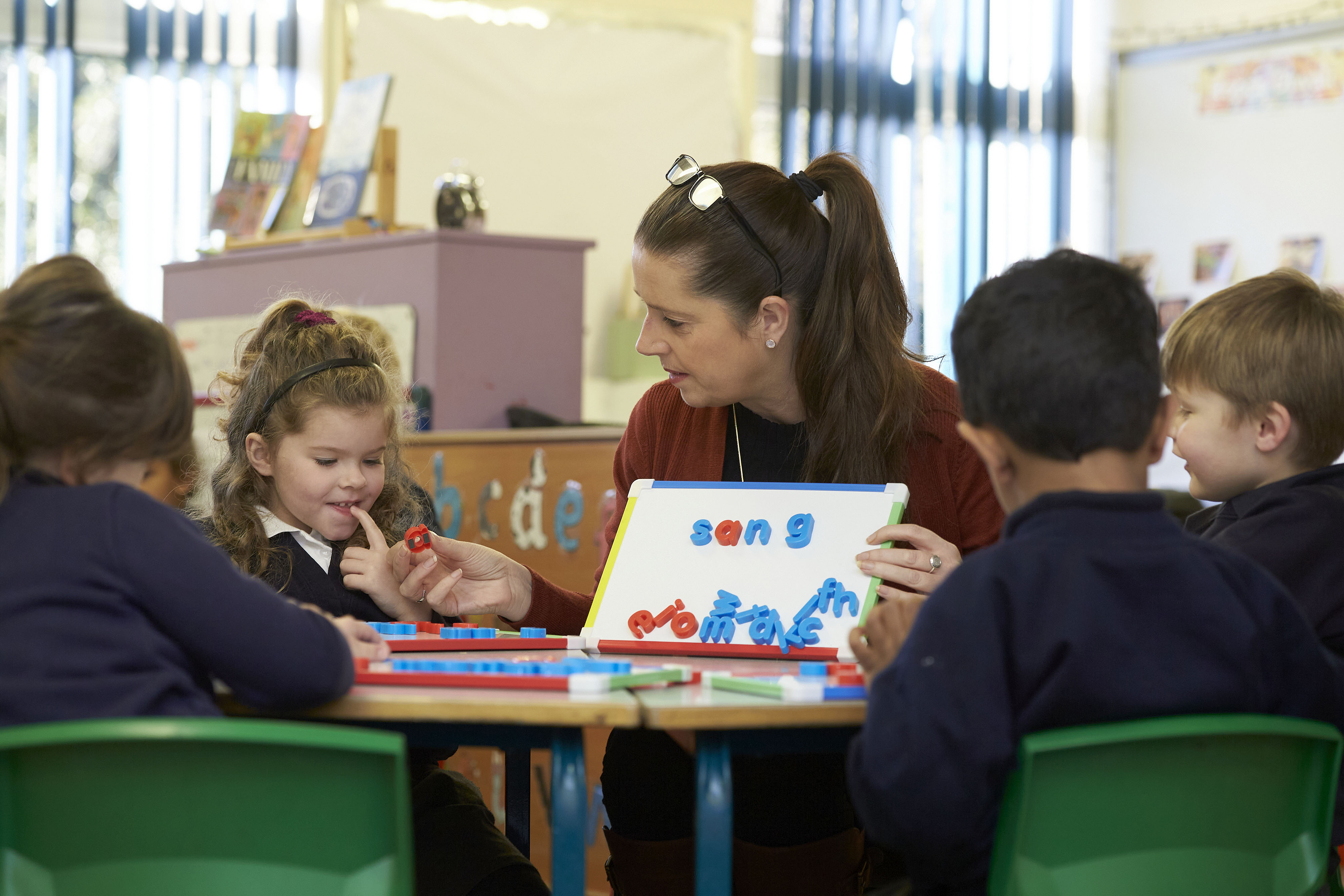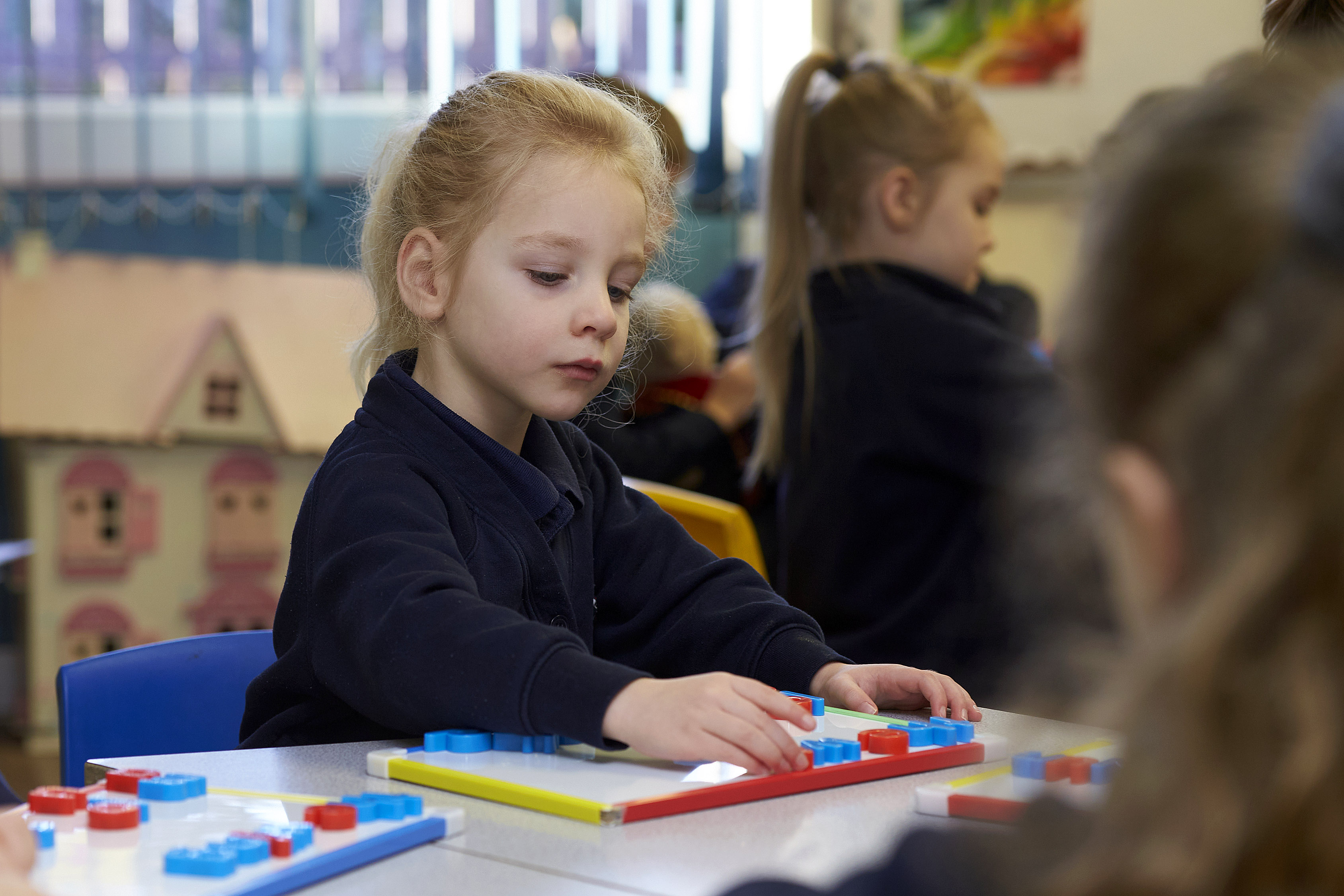Phonics programme
At St. Peter’s, we follow the Bug Club Phonics programme to teach phonics. We use the structure of this phonics programme to introduce children to groups of letters in sets, along with tricky words, in a pre-determined, systematic order.
Expectations and End points
Our nursery children take part in Phase 1 activities daily with a focus on listening and attention. Staff begin using the Bug Club Phase 1 materials six weeks before children start school.
We expect structured, whole class phonics teaching to begin no later than the start of the first full week in Reception. As soon as children have learnt the first two sets of letter sounds, we teach them to begin blending and segmenting, starting with vc words (e.g. is, it, in, at). Children are taught the letter names as well as the sounds that these letters make and will recognise capital letters as well as lower case.
By the end of the autumn term, we expect all children to have been taught and be secure when blending and segmenting all of the letters and sounds in Phase 2, plus the first two sets of Phase 3 sounds (set 6 & 7) and be able to read on sight the first 13 tricky words (to, the, no, go, I, into, her, me, be, he, my, by, she).
By the end of the spring term, children will have completed Phase 3. We expect them to be able to blend and segment using all of the Phase 2 & 3 letters and sounds, plus read a further 8 tricky words (they, we, are, you, all, was, give, live) and be able to spell all the tricky words they have been taught so far.
During the summer term in Reception, children will consolidate all of their Phase 2 and 3 letters and sounds, and complete Phase 4, so that they are able to read and spell words with adjacent consonants (e.g. mend, gran, track) and two syllable words (e.g. laptop, lunchbox) by the end of their Reception year. They will also recognise on sight and be able to spell a further 14 tricky words (said, have, like, so, do, some, come, were, there, little, one, when, out, what).
Throughout Year 1, children will be taught all of the alternative spellings for the sounds they already know by following Phase 5 of the Bug Club Phonics programme. They will learn to read and spell a further 8 tricky words (oh, their, people, Mr, Mrs, looked, called, asked) and will also be able to read and spell all of the Year 1 common exception words from the National Curriculum by the end of the year.
From Year 2, reading comprehension skills are taught and practised regularly using on the ‘VIPERS’ approach. Children also follow the Year 2 Headstart spelling programme, so that by the end of Key Stage 1 they have become fluent readers and increasingly accurate spellers. It is during Year 2 that the shift from learning to read to reading to learn takes place so that our children are reading for information and for pleasure as they move into Key Stage 2.
Terminology
When children first begin school with us in Reception, we use the terms ‘letters’ and ‘sounds’, for example, “These two letters make one sound.” As children progress through Year 1 and into Year 2, they will also be introduced to terms including ‘grapheme,’ ‘phoneme’ and ‘split digraph’ so that they understand this vocabulary as well.
Blending and Segmenting
We use sound buttons when teaching children to blend.
When orally segmenting, we ask children to show us how many sounds they can hear in a word using their fingers and then ask them to ‘pinch’ the sounds as they say them. We use phoneme frames to support children’s segmenting when spelling.
Letter formation
At St. Peter’s we follow the Nelson handwriting scheme. When children are ready, we encourage them to use a tripod pencil grip. In order to ensure that no child is disadvantaged by a lack of pencil control, they will have access to magnetic letters, letter cards, and similar resources in order to manipulate letters and be able to segment and spell words.
Reading books
We use the Bug Club Phonics decodable reading books in Reception and Year 1. Children take home a minimum of two books at a time. One will always be a phonetically decodable text that contains letter sounds that children have already been taught and matches their blending ability, so that they always feel a sense of achievement when they are asked to read it. The other will be a story or non-fiction book that they are able to share with an adult. Our aim is for all children to be able to read fluently (i.e. with accuracy and speed) by the end of Year 1.
Nursery children are introduced to the Bug Club Phonics wordless reading books during their final six weeks before starting school. This helps to familiarise children with the Bug Club materials prior to entering our Reception class.
In Year 2, children are introduced to a wider range of reading scheme books to reflect their growing ability to read familiar words automatically and decode several hundred words quickly and silently. We want our children to be able to read a range of more challenging texts and aim to broaden their vocabulary by the end of Key Stage 1.
Fluency
Every child in Reception and Year 1 reads a phonetically decodable book at the correct phonics level every day for at least 10 minutes – this is known as ‘Speed read.’
Provision for children who struggle to keep up
As soon as we feel that any child is struggling to keep up with the pace of learning in Reception, we put provision in place in the form of intervention sessions the same week. These sessions take place outside of the usual whole class phonics lesson, so that children are not in danger of falling further behind. Intervention sessions are led by either teachers or teaching partners with strong phonics subject knowledge.
If children in Key Stage 1 continue to struggle to keep up, they receive daily additional support which is delivered in addition to their whole class phonics or spelling lesson.
Any children in Nursery or Reception who need support with early language and listening skills receive targeted intervention through programmes including Early Years Talk Boost and Nuffield Early Language Intervention.


